
Joan Mitchell was an American artist who worked primarily in painting and printmaking, and also used pastel and made other works on paper. She was an active participant in the New York School of artists in the 1950s. A native of Chicago, she is associated with the American abstract expressionist movement, even though she lived in France for much of her career.
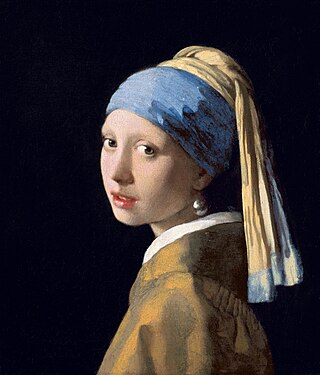
The history of Western painting represents a continuous, though disrupted, tradition from antiquity until the present time. Until the mid-19th century it was primarily concerned with representational and traditional modes of production, after which time more modern, abstract and conceptual forms gained favor.
Hannah Maybank is a British artist best known for the ripped and distressed surfaces of her three-dimensional paintings in acrylic. She graduated from an MA in Painting at the Royal College of Art, London, in 1999, following a BA (Hons) Fine Art from Liverpool John Moores University. She lives and works in London.

Doris More Lusk was a New Zealand painter, potter, art teacher, and university lecturer. In 1990 she was posthumously awarded the Governor General Art Award in recognition of her artistic career and contributions.

Chen Shu was a female Chinese painter during the early Qing dynasty. She was born in Xiuzhou and was also known by the courtesy name Nanlou and her literary names "Shangyuan Dizi" and "Nanlou Laoren". She is considered the first female painter of Qing dynasty as well as the inaugurator of Xiushui School painting style. Apart from her artistic works, she was also known as the mother of Qing statesman and poet Qian Chenqun. After the early death of her husband, Chen raised her son by herself. When the latter became a prominent statesman in the court of the Qianlong Emperor, he introduced the emperor to his mother's paintings. Through this avenue she became favored by Qianlong, and many of her works were featured in the imperial collection. Chen painted figures, landscapes, and flower-and-bird paintings.

Barbara Takenaga is an American artist known for swirling, abstract paintings that have been described as psychedelic and cosmic, as well as scientific, due to their highly detailed, obsessive patterning. She gained wide recognition in the 2000s, as critics such as David Cohen and Kenneth Baker placed her among a leading edge of artists renewing abstraction with paintings that emphasized visual beauty and excess, meticulous technique, and optical effects. Her work suggests possibilities that range from imagined landscapes and aerial maps to astronomical and meteorological phenomena to microscopic views of cells, aquatic creatures or mineral cross-sections. In a 2018 review, The New Yorker described Takenaga as "an abstractionist with a mystic’s interest in how the ecstatic can emerge from the laborious."

The Emerson Dorsch Gallery, founded in 1991 as the Dorsch Gallery, is an art gallery in Miami, Florida, United States founded by Brook Dorsch. Initially located in Dorsch's 2nd story apartment over Parkway Drugs on Coral Way, the gallery featured the work of local young Miami artists, many of whom were enrolled in the University of Miami's Visual Arts department. The gallery gained an underground following after positive reviews from Miami Herald critic Helen Kohen. In early 2000, the gallery relocated to Wynwood, one of the first commercial galleries to open there, and was a driving force in setting up the Wynwood Art District in 2001.
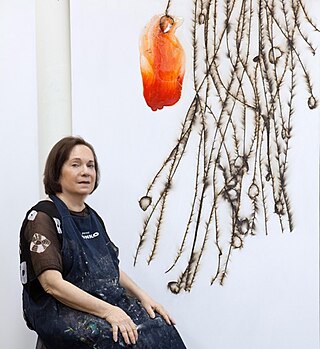
Mira Lehr was an American multidisciplinary artist. Her work encompassed painting, design, sculpture, and video installation. Lehr created abstract works inspired by the natural world.

JoAnne Carson is an American artist who is known for over-the-top, hybrid works in painting, sculpture and assemblage that freely mix fantasy, illusion and narrative, high and low cultural allusions, and seriocomic intent. She first gained widespread attention in the 1980s for what ARTnews critic Dan Cameron described as "extraordinary painted constructions—kaleidoscopic assemblages chock full of trompe-l’oeil painting, art-history quips, found objects and nostalgic echoes of early modernism." New York Times critic Roberta Smith wrote that Carson's subsequent work progressed methodically into three dimensions, culminating in freestanding botanical sculpture that exuded "giddy beauty" and "unapologetic decorativeness"; her later imaginary landscapes have been described as whimsical spectacles of "Disneyesque horror." Carson has been recognized with a Guggenheim Fellowship, awards from the American Academy of Arts and Letters, American Academy in Rome and National Endowment for the Arts, and Yaddo artist residencies. Her work has been exhibited at institutions including the Whitney Museum of American Art, Museum of Contemporary Art Chicago (MCA), Albright-Knox Gallery, New Orleans Museum of Art, and Institute of Contemporary Art, Philadelphia; it belongs to the public art collections of the Brooklyn Museum of Art, MCA Chicago, Frederick R. Weisman Art Foundation, and Modern Art Museum of Fort Worth, among others.
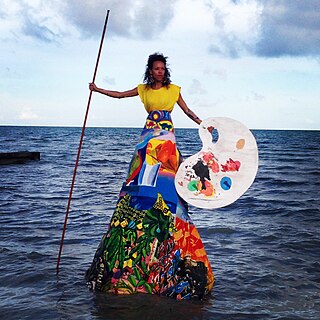
Paula Wilson is an African American "mixed media" artist creating works examining women's identities through a lens of cultural history. She uses sculpture, collage, painting, installation, and printmaking methods such as silkscreen, lithography, and woodblock. In 2007 Wilson moved from Brooklyn, New York, to Carrizozo, New Mexico, where she currently lives and works with her woodworking partner Mike Lagg.
Yolanda Sanchez (1953-2024) was a Cuban-American artist, professor, and fine arts director for the art program at Miami International Airport. She was known for non-figurative, abstract, expressionistic painting. Sanchez lived in Miami, Florida where she painted and worked for the Miami international airport.
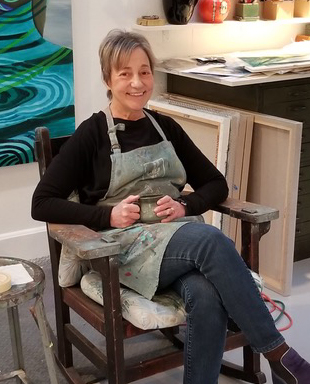
Barbara Grad is an American artist and educator, known for abstract, fractured landscape paintings, which combine organic and geometric forms, colliding planes and patterns, and multiple perspectives. Her work's themes include the instability of experience, the ephemerality of nature, and the complexity of navigating cultural environments in flux. While best known as a painter, Grad also produces drawings, prints, mixed-media works and artist books. She has exhibited in venues including the Art Institute of Chicago, Kemper Museum of Contemporary Art, Danforth Art, Rose Art Museum, Indianapolis Museum of Art and A.I.R., and been reviewed in publications, including Artforum, Arts Magazine and ARTnews. Grad co-founded Artemisia Gallery, one the country's first women-artist collectives, in Chicago in 1973. She has been an educator for over four decades, most notably at the Massachusetts College of Art and Design. Grad has been based in the Boston area since 1987.

Judith Murray is an American abstract painter based in New York City. Active since the 1970s, she has produced a wide-ranging, independent body of work while strictly adhering to idiosyncratic, self-imposed constants within her practice. Since 1975, she has limited herself to a primary palette of red, yellow, black and white paints—from which she mixes an infinite range of hues—and a near-square, horizontal format offset by a vertical bar painted along the right edge of the canvas; the bar serves as a visual foil for the rest of the work and acknowledges each painting’s boundary and status as an abstract object. Critic Lilly Wei describes Murray's work as "an extended soliloquy on how sensation, sensibility, and digressions can still be conveyed through paint" and how by embracing the factual world the "abstract artist can construct a supreme and sustaining fiction."
Wen Shu or Wen Chu was a Chinese illustrator and painter who worked under the art name Hanshan and was known for her paintings of flora and small insects during the Ming dynasty. She is considered the finest flower painter of the period.

Louise Belcourt is a Canadian-American artist based in New York, known for elusive, largely abstract paintings that blend modernist formal play, a commitment to the physical world, and a visual language that shifts between landscape and the body, architecture and geometric form. New York Times critic Ken Johnson writes of her earlier work, "balancing adroitly between Color Field abstraction and Pop-style representation, Ms. Belcourt's paintings invite meditation on the perceptual, the conceptual and how our minds construct the world." Describing her later evolution, David Brody writes in Artcritical, "Hard-nosed Canadian empiricism and Brooklyn grit seem to combine in Belcourt’s work to undermine stylistic stasis."

Judith Simonian is an American artist known for her montage-like paintings and early urban public art. She began her career as a significant participant in an emergent 1980s downtown Los Angeles art scene that spawned street art and performances, galleries and institutions such as Los Angeles Contemporary Exhibitions (LACE) and Los Angeles Institute of Contemporary Art (LAICA), before moving to New York City in 1985.

Mette Tommerup is a painter from Denmark, who lives and works in Miami. She is best known for creating large-scale works where she activates canvases by subjecting them to natural elements such as immersing them in ocean water, putting them in the ground, or tossing them off of buildings at a particular time of day or night. Her art is characterized by exploration, liberation, deconstruction, and immersive performance.

Katharine Kuharic is an American artist known for multi-layered representational paintings that combine allegory, humor, social critique, and aspects of Pop and pastoral art. Her art typically employs painstaking brushwork, high-keyed, almost hallucinogenic color, discontinuities of scale, and compositions packed with a profusion of hyper-real detail, figures and associations. She has investigated themes including queer sexual and political identity, American excess and suburban culture, social mores, the body and death. Artist-critic David Humphrey called Kuharic "a visionary misuser" who reconfigures disparate elements into a "Queer Populist Hallucinatory Realism" of socially charged image-sentences that shake out ideologies from "the congealed facts of contemporary culture" and celebrate the possibility of an alternative order.
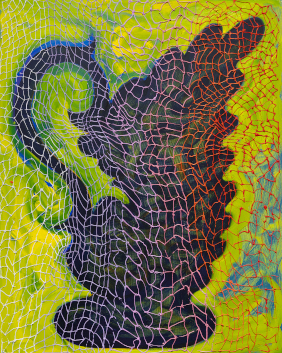
Wendy Edwards is an American artist known for vibrant, tactile paintings rooted in organic forms and landscape, which have ranged from representation and figuration to free-form abstraction. Her work has been strongly influenced by the 1970s Pattern and Decoration movement and its embrace of ornamentation, repetition, edge-to-edge composition, sensuality and a feminist vision grounded in women's life experience. Critics note in Edwards's paintings an emphasis on surfaces and the materiality of paint, a rhythmic use of linear or geometric elements, and an intuitive orientation toward action, response and immediacy rather than premeditation. In a 2020 review, Boston Globe critic Cate McQuaid wrote, "Edwards's pieces are exuberant, edgy, and thoughtful ... [her] sweet, tart colors and delicious textures make the senses a gateway into larger notions about women and men, creation and mortality."
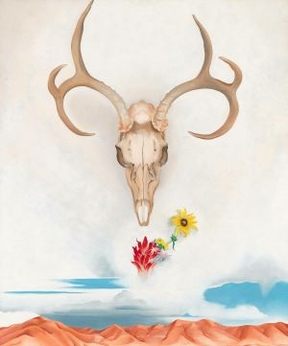
Summer Days is a 1936 oil painting by the American 20th-century artist Georgia O'Keeffe. It depicts a buck deer skull with large antlers juxtaposed with a vibrant assortment of wildflowers hovering below. The skull and flowers are suspended over a mountainous desert landscape occupying the lower part of the composition. Summer Days is among several landscape paintings featuring animal skulls and inspired by New Mexico desert O'Keeffe completed between 1934 and 1936.





















